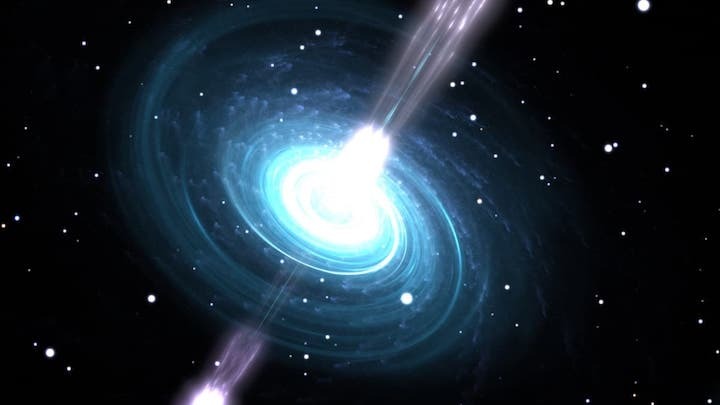
5.06.2022
The discovery of a neutron star emitting slower radio signals than ever recorded suggests there are more to be found.

It is estimated that the Milky Way galaxy is home to several hundred billion stars, which come in all shapes and sizes. Our Sun is a medium-sized, yellow star. There are the massive blue giants and small, cold, brown dwarfs. Then there are stranger kinds, such as neutron stars.
New research published in Nature Astronomy shows that many neutron stars may have literally gone under the radar, and that there could be more of them than previously thought.
When giant stars die, they supernova and their core collapses in on itself. The energy involved in the core collapse causes the electrons and protons in the atoms making up the core to fuse together, forming neutrons. Hence, a neutron star is born. These objects are usually only tens of kilometres across, but they are super dense – they can weigh more than the Sun.
Pulsars are neutron stars that emit twin beams of radio waves from their magnetic poles. This radiation jets out across the galaxy. As pulsars rotate, their radio signals are seen as pulses when observed from Earth.
Normally, pulsars rotate every few milliseconds or in the order of seconds. As they age, pulsars begin to spin more slowly, and astronomers theorise that their radio emission ceases.
But now a neutron star has been observed with a rotation period of 76 seconds – three times longer than the usual range. The team believes that this means there could be far more neutron stars in the galaxy than previously thought.
The neutron star, named PSR J0901-4046, was serendipitously discovered in 2020 by the Meer(more) TRAnsients and Pulsars (MeerTRAP) and ThunderKAT projects at the MeerKAT radio telescope in South Africa.
Neutron stars with longer rotation times indicate to astronomers the potential presence of others with similarly longer rotation periods. Until now, astronomers have largely been searching for neutron stars in the usual range, with pulses up to 10 or 20 seconds, but the existence of PSR J0901-4046 suggests there may be more outside this range waiting to be discovered.
“Detecting similar sources is observationally challenging, which implies a larger undetected population,” the authors, headed by lead author Manisha Caleb of the University of Sydney, write.
The Australian-based team of international researchers believes the result also suggests a link between different cosmic bodies, and may deepen our understanding of neutron-star evolution. “Our discovery establishes the existence of ultra-long-period neutron stars, suggesting a possible connection to the evolution of highly magnetized neutron stars, ultra-long-period magnetars [another type of neutron star] and fast radio bursts [FRBs],” the authors write. “Future image and time domain searches for similar long-period objects could prove vital to our understanding of the Galactic neutron star population and potential links to FRBs.”
Quelle: COSMOS
998 Views
